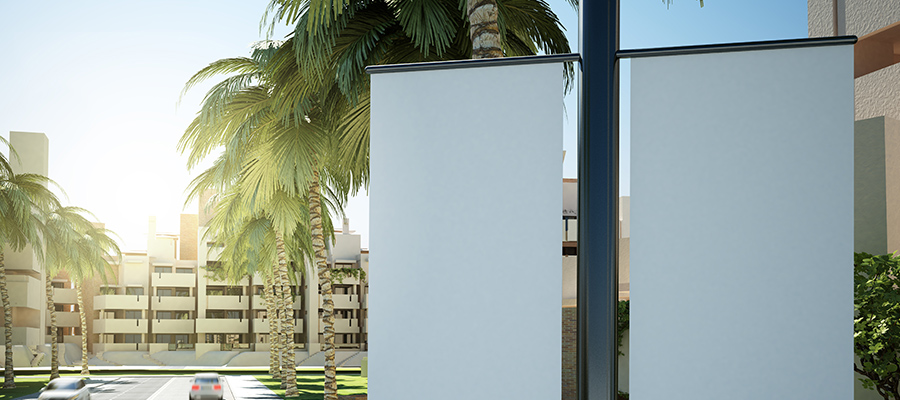
Effective Projected Area (EPA) is one way to measure a light pole’s strength. It refers to the total surface area of items (lights, banners, cameras, etc.) that the pole can support at a given windspeed.
Your light pole manufacturer will ask you for the pole’s total EPA and the wind speed of your project location so they can calculate your pole rating. And that tells you if your light pole, with all selected add-ons, will work for your project site.
Calculating Total Effective Projected Area
Typically, the EPA for each element is included in the cutsheet provided by the manufacturer.
To calculate your light pole’s total EPA, use this formula:
(EPA of light fixtures X quantity of light fixtures) + (EPA of the brackets X quantity of brackets) + (EPA of accessories* X quantity of accessories)
The higher the wind speeds, the lower your EPA will need to be. So, a light pole in a high wind location would call for smaller fixtures, brackets, and accessories.
*Helpful tip: you can find the square footage of a banner by multiplying the width by the height.
Steps For Getting Your Pole Rating
- Determine all fixtures, brackets, and accessories needed.
- Calculate your total EPA.
- Reference a wind chart (see below) to find the maximum wind velocity for your project site.
- Share the total EPA and wind velocity with your General Structures, Inc. Project Manager.
- We’ll determine your pole rating and let you know if your light pole is approved. If it’s not, we’ll help you make any necessary adjustments.
Here are two wind maps provided by the American Association of State Highway and Transportation Officials (AASHTO):
How Wind Affects Your Light Poles
When wind strikes a light pole, it causes either first-mode vibrations or second-mode vibrations.
First-mode vibrations are caused by sudden, high-velocity winds, which make the top of the pole sway. Light poles are designed with enough flexibility to handle that movement, so these types of vibrations are usually harmless.
Second-mode – or Aeolian – vibrations affect the middle of your pole when it’s struck by steady, low-velocity, high-frequency winds. These vibrations can cause a variety of issues, including cracked lamps, stress fractures, corrosion, and pole failure.
You can mitigate the effects of Aeolian vibrations with vibration dampeners.
If you have any questions or would like to place an order, contact us.
RELATED BLOG POSTS:
The Importance of Vibration Dampeners
Wind-Induced Vibrations and Their Effects on Steel and Aluminum Light Poles





